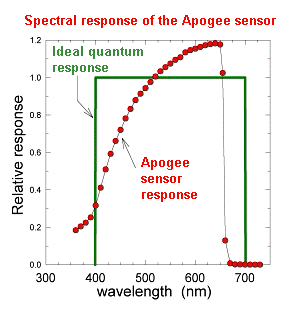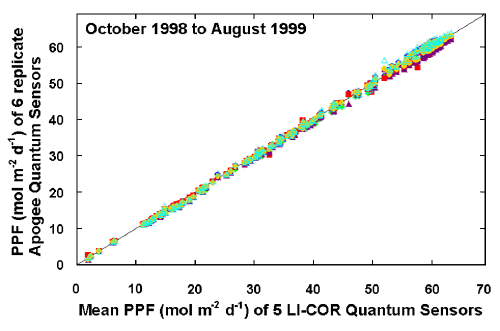Spectral response. An ideal quantum sensor
would give equal emphasis to all photons between 400 and 700 nm
and would exclude photons above and below these wavelengths. The
response of such a sensor is shown in the adjacent graph below.
The most accurate way to measure this radiation is with a spectroradiometer,
which costs over $15,000. However, quantum meters that approximate
the ideal response with filters are commercially available for under
$1000. These meters are accurate to within about ±3 % for
common light sources.
The spectral response of the Sensor used in
Quantum Meters and the Quantum Sensor is shown at right. As the
figure indicates, the sensor underestimates the 400 to 500 nm wavelengths
(blue light), overestimates the 550-650 wavelengths (yellow and
orange light), and has little sensitivity above 650 nm (red light).
Fortunately, common light sources are mixtures of colors and the
spectral errors offset each other. The sensor measures green light
(500-550 nm) accurately, so it can be used to measure the radiation
inside and at the bottom of plant canopies.
|

|


